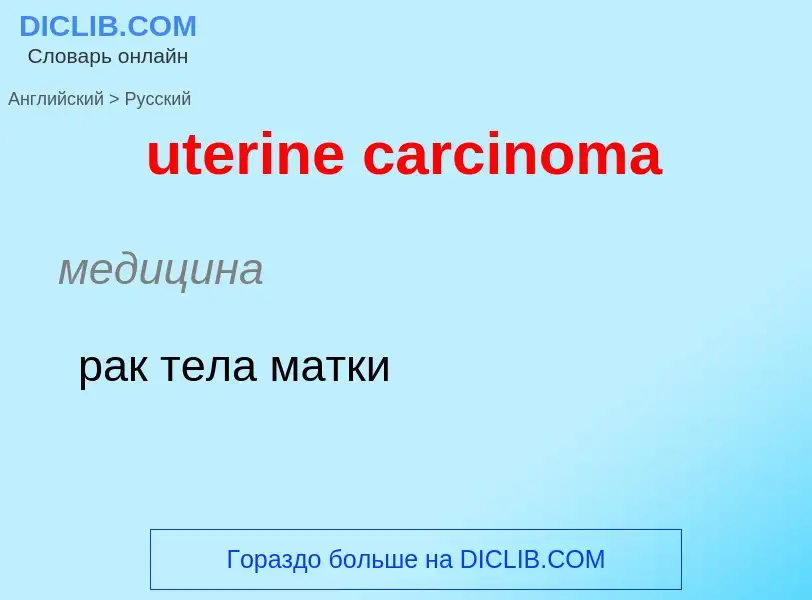Tradução e análise de palavras por inteligência artificial
Nesta página você pode obter uma análise detalhada de uma palavra ou frase, produzida usando a melhor tecnologia de inteligência artificial até o momento:
- como a palavra é usada
- frequência de uso
- é usado com mais frequência na fala oral ou escrita
- opções de tradução de palavras
- exemplos de uso (várias frases com tradução)
- etimologia
uterine carcinoma - tradução para russo
медицина
рак тела матки
медицина
карцинома из эпителия протоков
[kɑ:si'nəumə]
общая лексика
карцинома
рак
существительное
медицина
раковая опухоль
карцинома
раковое новообразование, карцинома
синоним
Definição
Wikipédia

Uterine cancer, also known as womb cancer, includes two types of cancer that develop from the tissues of the uterus. Endometrial cancer forms from the lining of the uterus, and uterine sarcoma forms from the muscles or support tissue of the uterus. Endometrial cancer accounts for approximately 90% of all uterine cancers in the United States. Symptoms of endometrial cancer include changes in vaginal bleeding or pain in the pelvis. Symptoms of uterine sarcoma include unusual vaginal bleeding or a mass in the vagina.
Risk factors for endometrial cancer include obesity, metabolic syndrome, type 2 diabetes, taking pills that contain estrogen without progesterone, a history of tamoxifen use, late menopause, and a family history of the condition. Risk factors for uterine sarcoma include prior radiation therapy to the pelvis. Diagnosis of endometrial cancer is typically based on an endometrial biopsy. A diagnosis of uterine sarcoma may be suspected based on symptoms, a pelvic exam, and medical imaging.
Endometrial cancer can often be cured while uterine sarcoma typically is harder to treat. Treatment may include a combination of surgery, radiation therapy, chemotherapy, hormone therapy, and targeted therapy. Just over 80% of women survive more than 5 years following diagnosis.
In 2015 about 3.8 million women were affected globally and it resulted in 90,000 deaths. Endometrial cancer is relatively common while uterine sarcomas are rare. In the United States, uterine cancers represent 3.5% of new cancer cases. They most commonly occur in women between the ages of 45 and 74 with a median age of diagnosis of 63.




